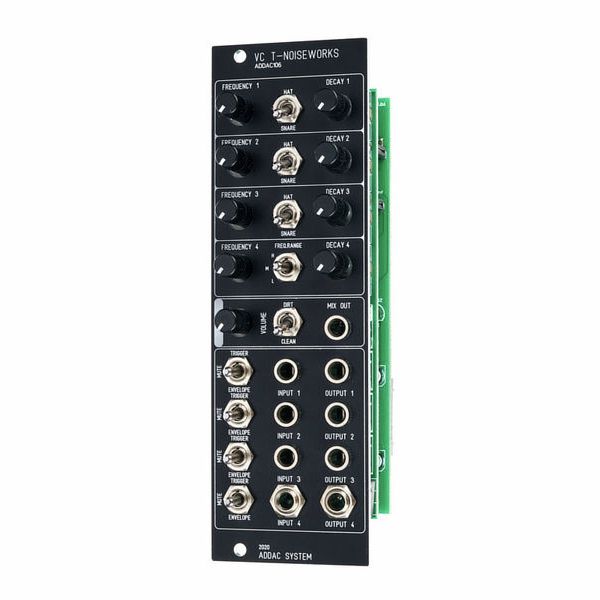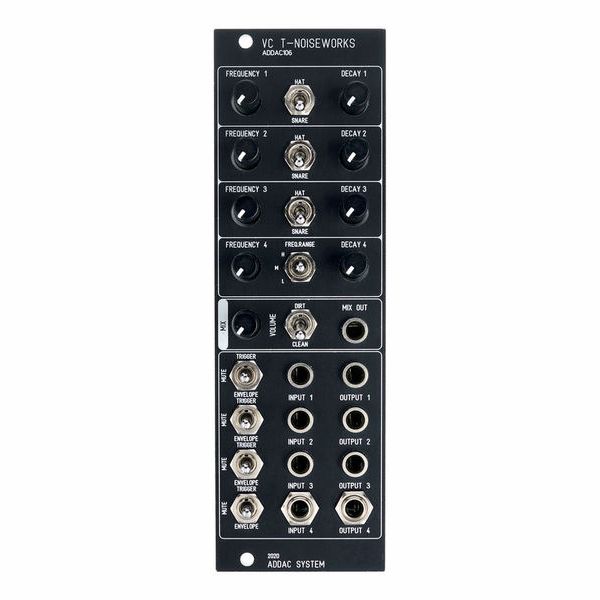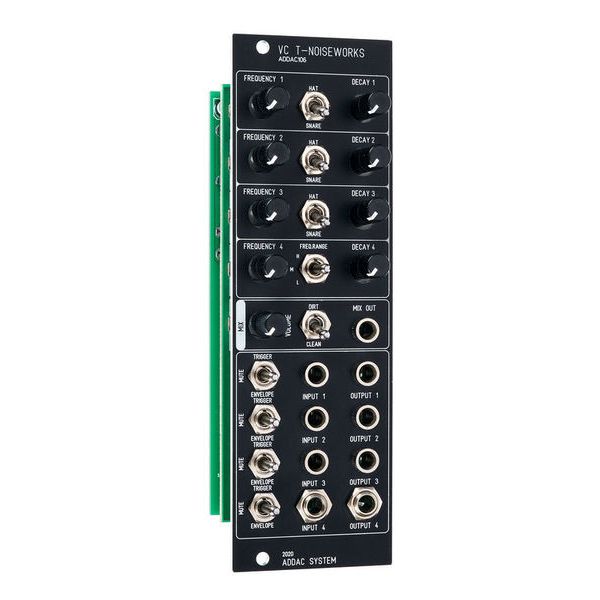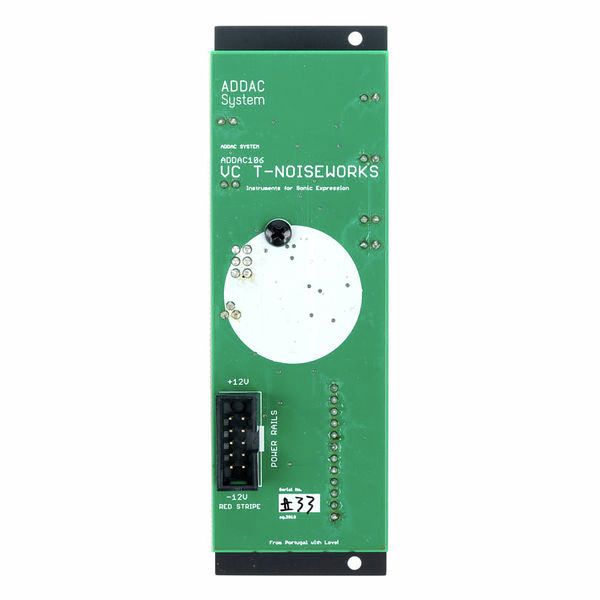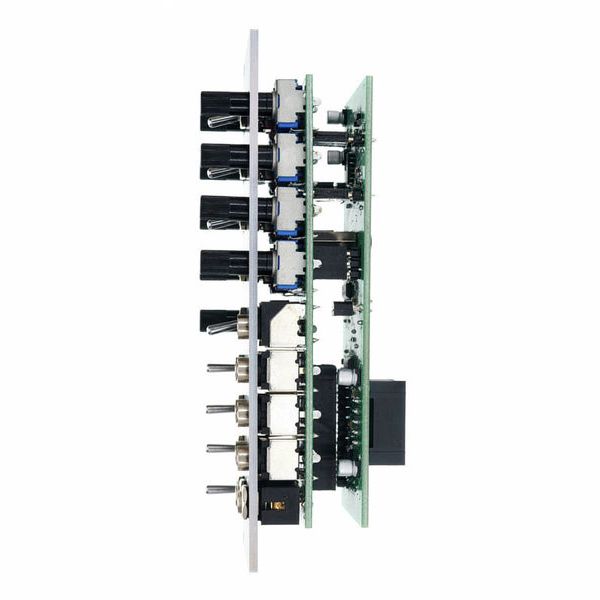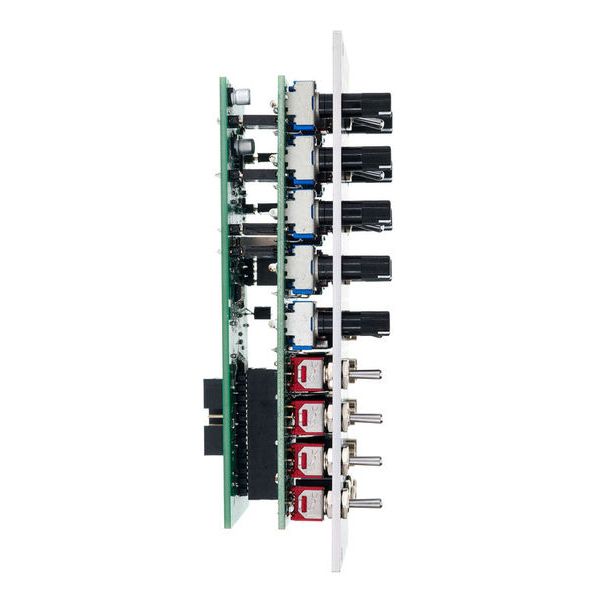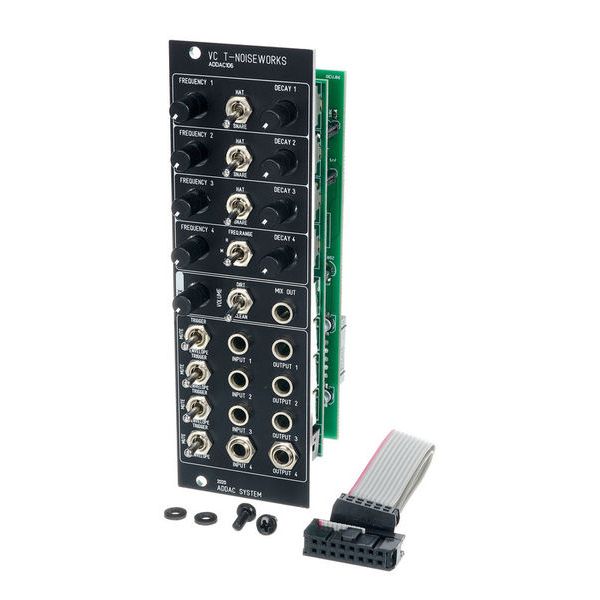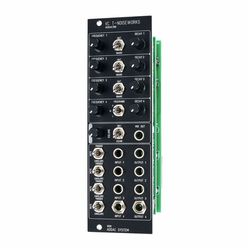Module Eurorack
- Source de bruit 4 canaux avec filtre réseau en T et enveloppe de Decay
- Convient pour la création de sons de percussion
- Fréquence du filtre et temps de decay réglables par canal
- Filtre passe-haut commutable pour les canaux 1-3
- Canal 4 avec sélecteur de fréquence (basse/moyenne/élevée)
- 3 modes VCA sélectionnables par canal : Trigger, Mute, Enveloppe
- Sortie unique par voix
- Sortie sommation avec contrôle de volume et commutateur Clean/Dirt
- Consommation de courant : 40 mA (+12V) / 40 mA (-12V)
- Largeur : 8 TE
- Profondeur : 40 mm
Référencé depuis
Décembre 2020
Numéro d'article
505626
Conditionnement (UVC)
1 Pièce(s)
Largeur
8 TE / HP
Les clients qui ont regardé ce produit ont acheté ceci
-
Afficher les Modules Générateurs de Bruit dans la fourchette de prix 160 € - 200 €
-
Aller à la catégorie Modules Générateurs de Bruit
-
Aller à la catégorie Modules de Batterie
-
Aller à la catégorie Systèmes Modulaires
-
Aller à la catégorie Synthétiseurs, Workstations & Samplers
-
Aller à la catégorie Pianos & Claviers
-
Voir les infos pour le constructeur ADDAC
-
ADDAC Pianos & Claviers en un clin d'oeil





